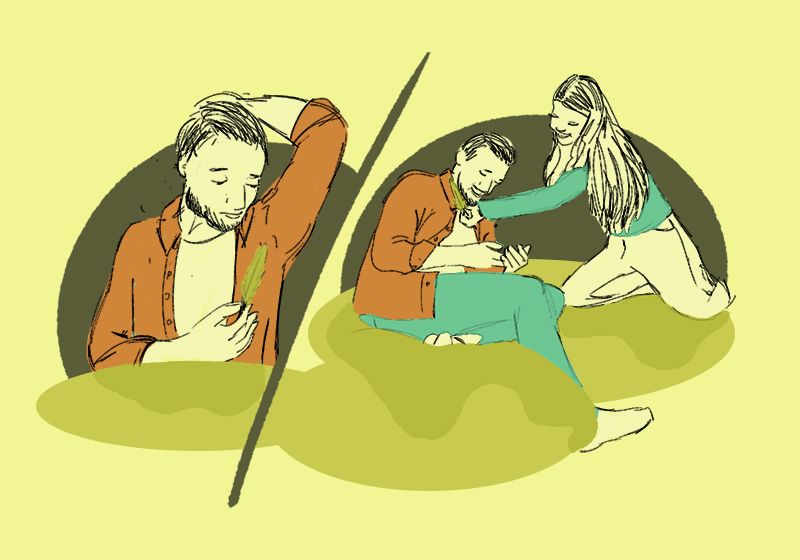Tickling has puzzled early philosophers and modern neuroscientists alike.
Image credit:AnnaMaria Vasco
A surprise tickle attack, especially in sensitive areas like the armpits, torso, or soles of the feet, can send most people into uncontrollable laughter as they squirm away, while others might stay completely unfazed. What exactly transforms a specific touch into a tickle?
Konstantina Kilteni runs a somatosensation and gargalesis (touch and tickle) lab to understand how the human brain distinguishes between self-generated and externally-generated touch.
Johannes Frandsén
“[Tickling] is a sensation that almost everybody has experienced at least once in their life,” remarked Konstantina Kilteni, a neuroscientist at the Donders Institute and the Karolinska Institute. Kilteni and her colleagues developed an automated “tickle machine” to control and measure specific aspects of what makes a touch ticklish.1 Here, participants placed their feet through openings in a platform, where a mechanical stick tickled their soles. They monitored brain activity and the wide range of reactions: Some people laughed uncontrollably, others flinched and recoiled, and some remained entirely unaffected.
Although Aristotle believed that tickling is unique to humans, rats and great apes can also be tickled, suggesting an evolutionary basis for this sensation.2,3 Thus, scientists have proposed several theories about why tickling exists. “One [idea] is about serving a social function. It helps bonding between people because it makes people laugh,” said Kilteni. Another theory suggests that the tickle response is a protective reflex, helping the body react to unexpected sensations in vulnerable areas.
But why is tickling oneself an almost impossible task? According to Kilteni, the brain processes self-touch differently from touch by others. When a person moves their hand to touch their face, the brain’s somatosensory cortex registers the contact to a lesser degree than to that of a stranger’s touch. That’s because, even before touch occurs, the cerebellum, an area involved in predicting movement, anticipates the sensation and prevents the tickle reflex from kicking in.4
Kilteni also noted that individuals with schizophrenia show reduced neural activity in areas related to self-touch. This may make it easier for them to tickle themselves. Researchers postulate that this may be a disruption in the anticipatory mechanism and be related to the severity of their hallucinations, where individuals perceive self-touch as foreign.5
Different hypotheses exist but much remains unknown. Kilteni continues to explore the mystery behind this puzzling sensation, calling tickling “a big enigma for neuroscience.”




